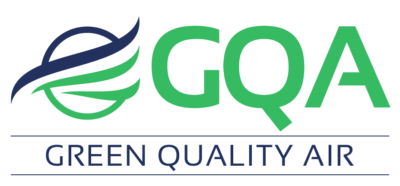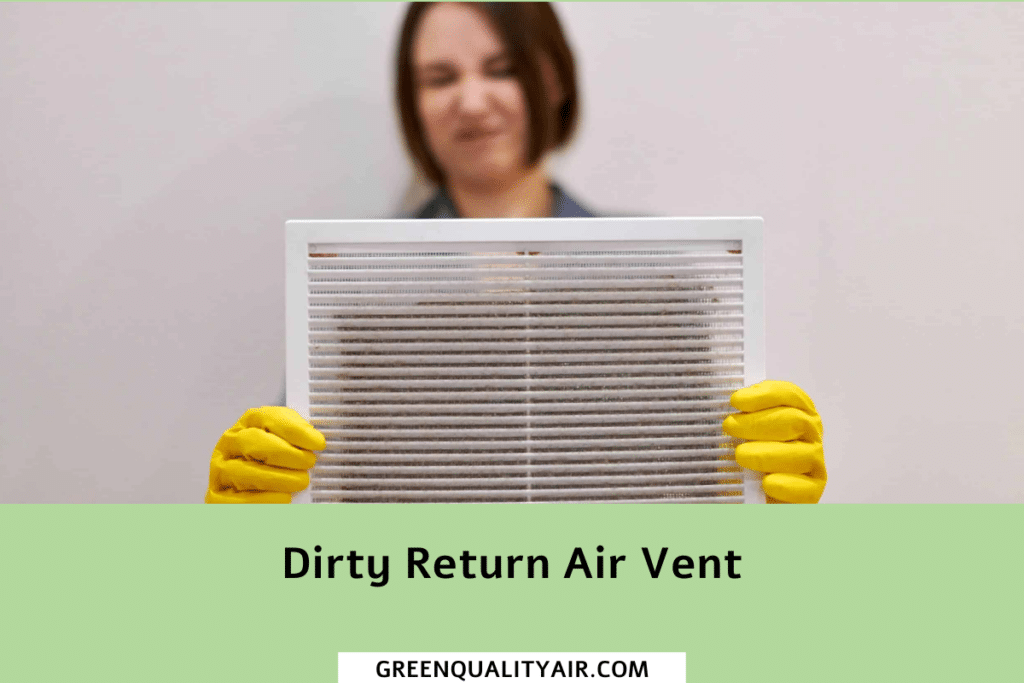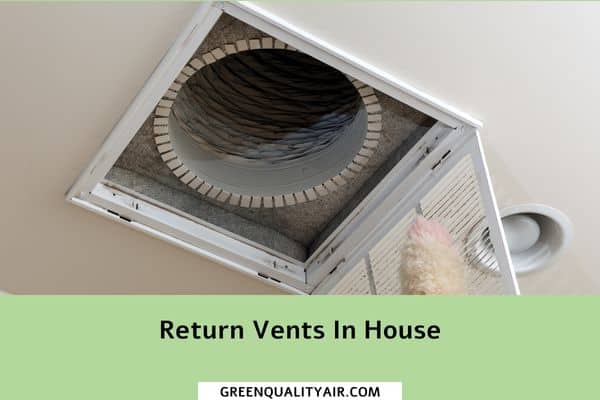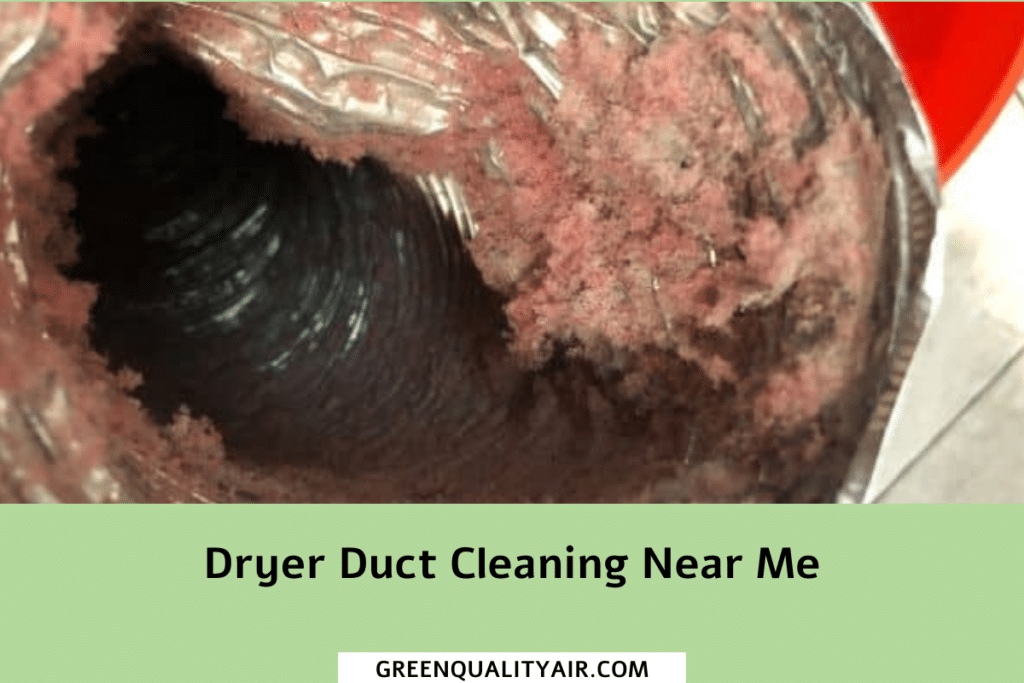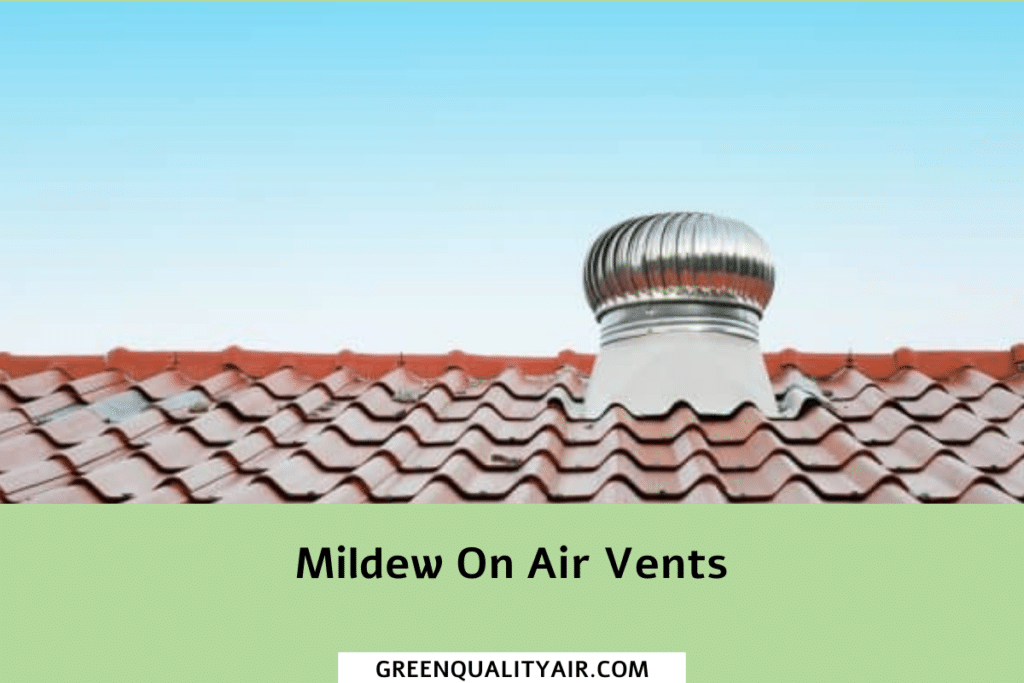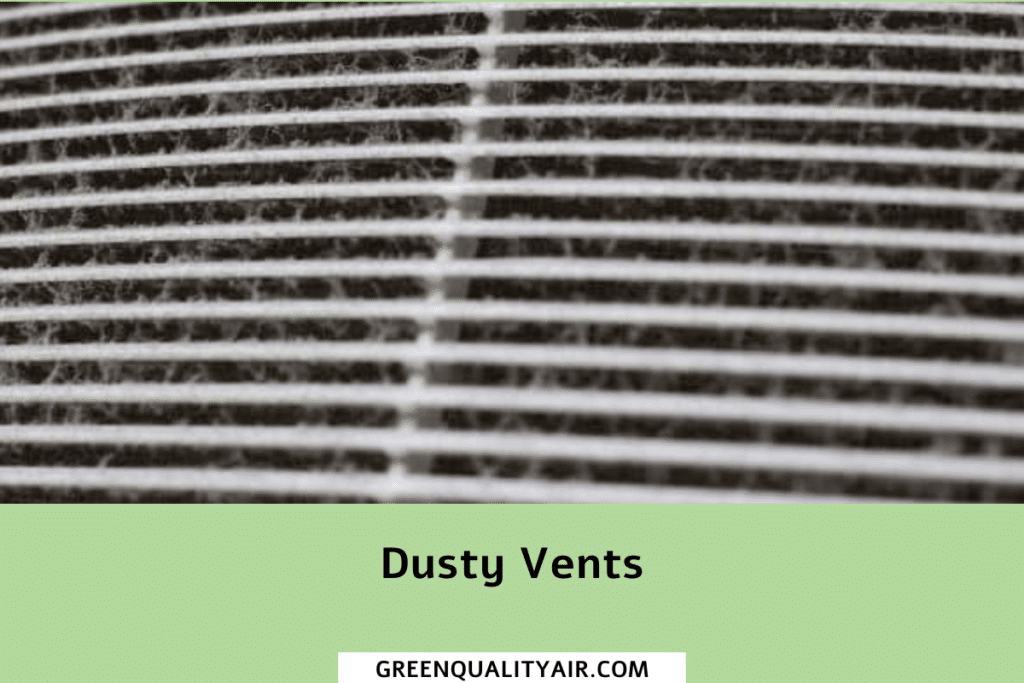Return air vents are an important part of your HVAC system, but they can be a magnet for dirt and debris. Gross as it may sound, these dirty return air vents can affect the quality of the air entering your home leading to health issues and efficiency problems with your heating and cooling units.
So if you’ve been wondering why that nasty smell won’t go away or why the temperature in rooms fluctuates with no explanation, there is a good chance that something might be clogging up your return vent! Read on to learn what causes these blockages and how you can prevent them from happening so you enjoy clean, pleasant indoor air all year round.
Understand why return air vents can get dirty
Return air vents can easily become dirty or clogged due to a variety of factors.
These vents are responsible for circulating air throughout a building or home,
but they also have the unfortunate task of collecting dust, dirt, and other
particles that enter through the air. Pets, smoking, and poor air quality can all
contribute to dirty vents. When left unchecked, this build-up can become a
hazard to health and home, leading to decreased air quality, increased energy
costs, and even a fire risk. Regular cleaning and maintenance of return air
vents can help improve indoor air quality, reduce energy costs, and ensure a
comfortable and healthy living environment.
Recognize the signs that your return air vent may need to be cleaned
Your home’s HVAC system plays a crucial role in keeping indoor air quality at optimal levels. But what happens when air doesn’t seem to be flowing freely through the vents? It could be a sign that your return air vent is in dire need of a deep cleaning. Repeatedly ignoring this critical component of your HVAC could eventually lead to unwanted problems such as invasive mold growth or even putting additional stress on internal components.
Be on the lookout for signs of decreased air flow or odd odors emanating from your return air vent. When you notice these warning signs, don’t hesitate to call in a professional to give your system the attention it needs. By regular cleaning of your return air vent, you’ll improve the efficiency and longevity of your HVAC system while breathing in cleaner air.
Contact Us
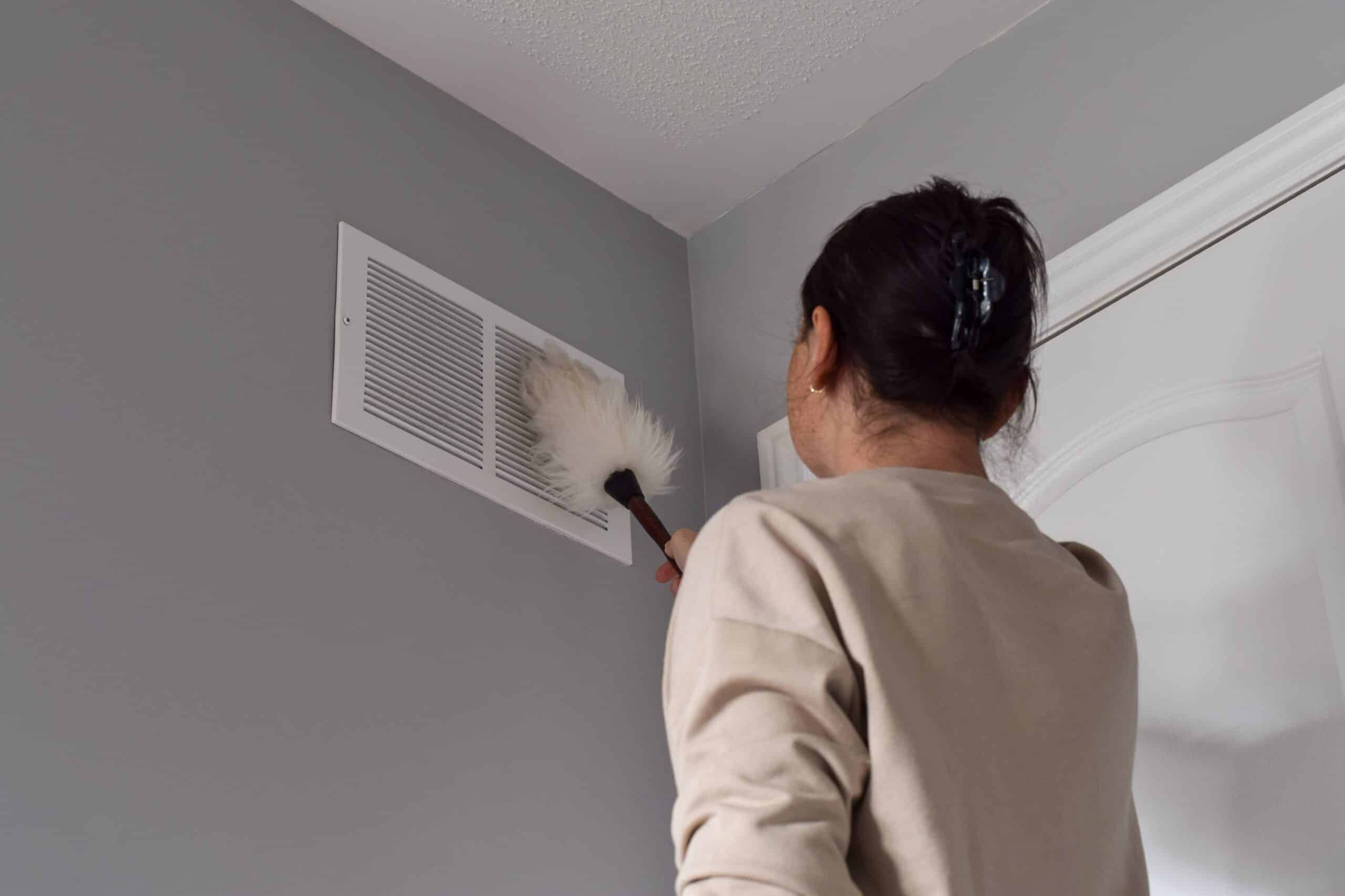
Learn how to properly clean and maintain your return air vent
As we spend more time indoors, it becomes increasingly important to ensure that our home’s HVAC system is functioning properly. A key component to this is cleaning and maintaining your return air vent. Not only will this help improving air quality in your home, but it will also increase the longevity of your HVAC system.
By following a few simple steps, you can easily and properly clean your return air vent, ensuring that it functions at maximum efficiency. With a little bit of effort, your home’s air quality will greatly improve, making for a healthier and more comfortable living space.
Know when to call in a professional for help with deep cleaning or repair
Deep cleaning and repairs can be quite challenging, especially for those who lack the skills or experience needed to tackle the task. Sometimes, the best approach is to call in professionals who can get the job done right.
Whether you’re dealing with tough stains on your carpets, mold growth in your bathroom or kitchen, or facing a plumbing or electrical issue that requires expertise, it’s better to play it safe and seek professional help. By doing so, you can save yourself stress, time, and possibly even money. Don’t hesitate to reach out to experienced professionals who can help you restore your home to its best condition.
More Articles
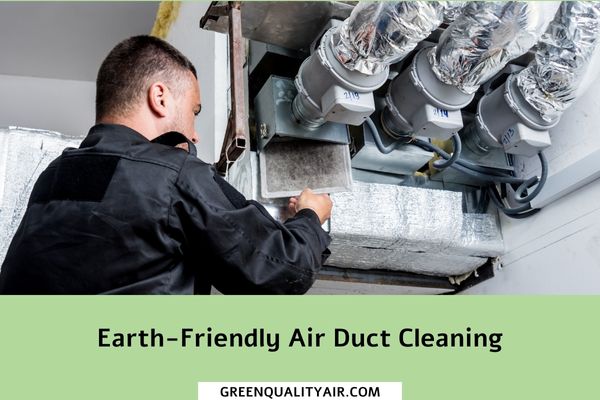
Earth-Friendly Air Duct Cleaning: Sustainable Solutions for Clean, Healthy Air
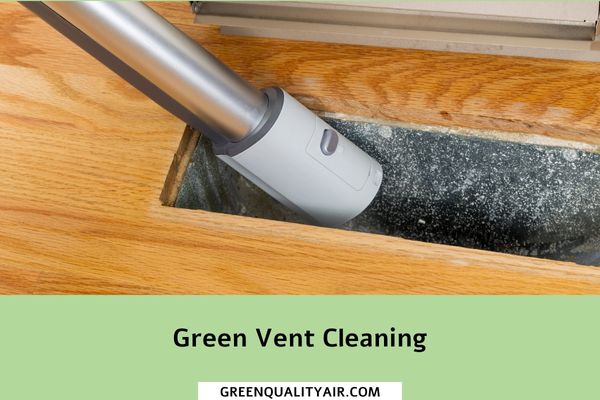
Green Vent Cleaning – A Comprehensive Guide to Sustainable and Effective Ventilation Maintenance
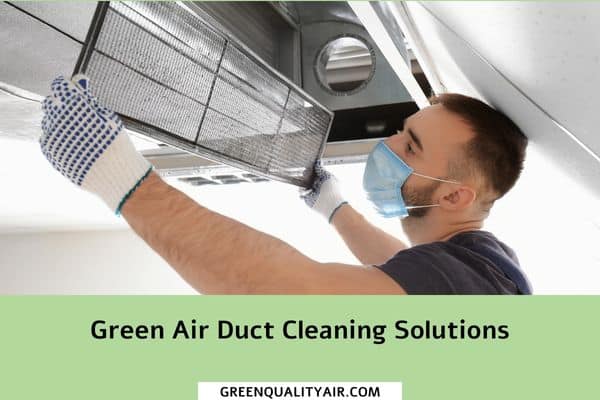
Breathe Easy with Green Air Duct Cleaning Solutions

Earth-Friendly Air Duct Cleaning: Sustainable Solutions for Clean, Healthy Air
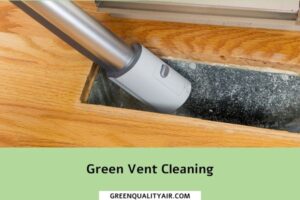
Green Vent Cleaning – A Comprehensive Guide to Sustainable and Effective Ventilation Maintenance
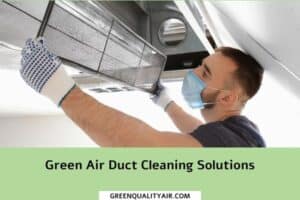
Breathe Easy with Green Air Duct Cleaning Solutions
Consider heating and cooling system upgrades as an additional way to improve home comfort
Ensuring home comfort is essential for a stress-free living experience. Home heating and cooling systems play a significant role in achieving this objective. It is vital to consider upgrading your systems to ensure efficiency and reliability, no matter the season.
With a reliable heating and cooling system, you can rest assured of a comfortable home, no matter the weather conditions outside. So, if you’re looking for additional ways to improve your home comfort, consider upgrading your heating and cooling systems. It’s an investment that is worth making for enhanced comfort and peace of mind.

Tips for creating a regular maintenance routine to keep your return air vent clean and functioning properly
Maintaining the health and functionality of your home’s return air vents might not be at the top of your to-do list, but it is crucial for promoting proper air circulation throughout your home. One simple and effective way to keep your return air vents in top condition is by developing a regular maintenance routine.
This not only ensures a longer lifespan for your HVAC system but also helps to improve the air quality in your home. From removing debris and dust to scheduling regular professional cleanings, implementing a maintenance routine is a small but significant step towards a healthier and more efficient home.
With regularmaintenance and inspection, you can keep your return air vent clean and ensure that your system remains in peak operating condition. As preventive measures, it’s important to address issues as soon as they appear in order to reduce the chance of needing to repair or replace the return air vent.
If a clogged filter is causing poor airflow, be sure to change the filter regularly. When it comes to creating a maintenance routine for your return air vent, make sure to test the ducts periodically and hire a professional when signs of significant wear are detected.
Keeping your home comfortable isn’t just about buying the right equipment – creating an effective maintenance plan is a key part of ensuring long-term comfort. By following these easy steps, you can develop an air quality strategy that will help maintain indoor air quality and keep temperatures comfortable year-round.
FAQ
What causes a dirty return air vent?
A dirty return air vent can be caused by a variety of issues. These include the build-up of dust, dirt, and other debris in the filter; an improperly sized filter for your unit; problems with air temperature or humidity levels in your home; inadequate ventilation in your home; or insufficient maintenance to remove dust from vents.
The most common cause is a clogged air filter which should be replaced regularly (at least every 3 months). If you’re noticing that the filter isn’t catching as much debris as usual, it may need to be replaced sooner than normal. Additionally, if there are any large pieces of debris like pet hair falling out of the vent when its open, it’s likely that the filter needs replacing because it is no longer able to capture particles properly.
It could also indicate insufficient maintenance on your part such as not cleaning off all registers and grilles around individual rooms regularly so that dust doesn’t accumulate too often on them leading up to larger pieces entering into and clogging up your ductwork system which will result in buildup within your return vents too over time. This kind of deep cleaning requires dismantling parts of walls/floors/ceilings so make sure you take precautions before starting!
Finally, improper temperature or humidity levels can lead to condensation forming inside ductwork systems which leads to increased collection and formation of dust particles due to moisture being present while these particles have nowhere else they can go but into our homes through our return vents thus resulting in them becoming dirty faster than usual even when filters remain clean but still enough buildup happens over extended periods without proper attention given towards this area: Temperature should generally stay between 68-74 degrees Fahrenheit year round while humidity should ideally hover at around 40%-50%. Anything above or below these ranges could lead potential health hazards due to mold accumulation if gone unchecked for prolonged durations as well!
What are the signs of a dirty return air vent?
One of the telltale signs that you have a dirty return air vent is when you’re smelling musty or unpleasant odors coming from the vent. This could be caused by dust, pet dander, mold, and other pollutants that are trapping themselves in the system. You may also see visible debris like hair and dust coming out of the vents as well.
Another sign is if your air conditioner starts to struggle to keep up with your cooling demands despite being properly maintained – this could mean there’s too much buildup in the system for it to work at its maximum efficiency. And finally, if you notice any changes in airflow such as low pressure or inconsistent currents of air then it’s likely an indication that your return air vent system needs cleaning.
It’s important to inspect and clean all parts of your HVAC (heating ventilation & cooling) regularly – not just for improved indoor air quality but also for greater energy efficiency since a clogged filter can cause your unit to become overworked due to reduced airflow resulting in higher utility bills!
What are the risks of having a dirty return air vent
Having a dirty return air vent can be dangerous and can lead to many risks. To begin, your indoor air quality will suffer when your return air vents are clogged with dirt and debris. This is especially true if dust, pollen, mold spores or other microscopic particles accumulate in the filters. The presence of these particles can not only cause breathing difficulties for those with respiratory allergies and asthma but also spread illnesses throughout the building as they are blown through the ductwork.
Additionally, a dirty return air vent decreases energy efficiency in HVAC systems by reducing airflow. When blocked by dirt, your system has to work harder to keep temperatures at desired levels; this also leads to higher utility bills as the system strains against its obstructed filters to achieve balance. Furthermore, poor maintenance of an HVAC system may result in mechanical damage due to breakdowns caused by overheating from stress on moving parts such as blowers and motors that overwork themselves due to decreased circulation capacity caused by unclean filters or vents.
Lastly, threat of fire is possible when combustible materials like lint build up inside a unit’s components such as furnace heat exchangers or duct work itself; it’s important that you clean out all components thoroughly and regularly lest any spark set off an inferno like conditions within them!
In conclusion, having a dirty return air vent carries multiple risks ranging from diminished health among occupants within buildings equipped with contaminated HVAC systems all the way up to potential catastrophic home fires resulting from buildup of combustible materials inside units’ sensitive inner workings due neglecting routine maintenance duties – thus it is paramount that you make sure all aspects of any etc equipment employed for temperature regulation are kept spotless at all times!
How can I prevent dirt in my return air vent
The best way to prevent dirt in your return air vent is to ensure that your entire heating, ventilation, and air conditioning (HVAC) system is regularly maintained. This means you should have the filter of your HVAC system changed every two months or so. Additionally, having a registered technician or contractor regularly inspect and clean all drain pans, coils, condensate lines, humidifiers/deodorizers, blowers/fans will go a long way in preventing dirt from entering the return vents.
It’s also important to be mindful of potential sources inside the home where dust could come from – such as pets or renovations – as these can greatly increase the amount of dirt in the air over time. To reduce this dust load even further you can use an electronic air cleaner that helps trap particles before they enter into your ductwork. It’s also recommended that carpets are vacuumed weekly and upholstered furniture should be routinely cleaned using special cleaning agents designed specifically for fabric-covered surfaces. Finally there are other small but impactful methods such as changing furnace filters more often than indicated by manufacturer instructions; making sure windows and doors open/close properly; caulk & weatherstrip along window frames & doorways; installing insect repellent screens on windows & vents; sealing any gaps around electrical wires & plumbing pipes at walls & floors; wiping down any visible dust particles on shelves with a damp cloth twice per week etc., which when practiced religiously will help maintain low indoor levels of airborne pollutants resulting in fewer germs entering through return vents into our home ecosystem!
How often should I clean my return air vent
Cleaning your return air vent is an important part of ensuring that your home has the cleanest, most efficient air quality possible. The frequency with which you should clean your return air vent depends on several factors, including the type of filter you use and how often it needs to be changed or washed, as well as the pollutants and allergens present in your home’s indoor environment.
For starters, if you choose to use a disposable fiberglass filter in your return air vent, it will need to be changed at least every three months but can last up to six months depending on the level of airborne particles and debris present in the vents. If using a washable electrostatic filter with a fan-driven system instead, then cleaning should occur once every two weeks—you may need to check more frequently if there are any noticeable changes in humidity or temperature levels throughout various rooms within your home.
Aside from changing/washing filters regularly, another way to ensure full efficiency of airflow through your return air vent is by vacuuming away all dust buildups accumulated on both interior and exterior components biweekly or monthly. This includes thoroughly vacuuming off the entire area around (and inside) each register opening; using compressed canned air is helpful when attempting to get into extremely tight spaces that cannot be reached by hand vacuumers alone. Additionally, depending on whether or not pets are present in the household (as pet dander can heavily affect pollen levels), you may want to also consider having indoor ducts professionally cleaned at least twice per year—in order for them to remain free from toxins such as mold spores hidden within hard-to-access areas of these ducts systems themselves!
Overall it’s important not only for ensuring general health and comfort purposes but also keeping energy costs low that all vents within homes are kept fully washed/cleaned often—at least once a month being ideal!
Are there any safety considerations to keep in mind when cleaning a return air vent?
Yes, there are several safety considerations to keep in mind when cleaning a return air vent. First and foremost, it is important to turn off the power before attempting any type of maintenance or repair. This will help avoid potential serious electrical shock hazards. It is also recommended that you wear protective clothing such as gloves and goggles to keep skin and eyes from coming into contact with dirt particles or other debris that may be present during the cleaning process. In addition, it is important to inspect the vent for any signs of damage like rips or tears which could lead to further complications during the cleaning process if not properly addressed beforehand. If these problems are identified then they should be repaired as soon as possible before continuing with the vent cleaning task at hand. Finally, all vents should be completely dry before re-installing them because wet vents can cause mold growth which can lead to undesirable indoor air quality issues down the line. Keeping these safety precautions in consideration when cleaning a return air vent will ensure a safe and successful outcome for all involved!
What are the best methods for cleaning a return air vent?
The best methods for cleaning a return air vent depend on the type of material used in the construction of your vents. Plastic, sheet metal, and aluminum all require different approaches because of their properties and how they conduct heat.
To clean plastic return air vents: First, vacuum away any dust or debris present in the vent using an attachment or wand with a soft brush. Next, use detergent and warm water to wipe down the inside surfaces. In order to get into smaller crevices within the vent, you may need to use a Q-tip or cotton swab lightly dampened with detergent solution. You can finish off by wiping down with a dry cloth or towel until it’s completely dry before replacing filter screens if necessary.
To clean sheet metal return air vents: Start by vacuuming both sides of each register using an attachment with a soft brush or wand that offers suction power; this helps loosen any dust particles lodged in tight spaces between sheets of metal mesh screen as well as those adhered onto surfaces (these are often difficult but necessary areas to clean). After vacuuming is complete spray cleaner onto each register grille/mesh screen then scrub off caked-on dirt with steel wool pads prior to rinsing off thoroughly; be sure not to scrub too hard so you don’t damage/dent/etch the surface! Finally wipe away remaining residue that may still remain after rinse using paper towels and follow up by reinstalling filters if needed.
To clean aluminum return air vents: The same procedure applies for aluminum as well – start by vacuuming first followed by spraying cleaner onto registers/grilles then scrubbing them gently (but firmly) while being extra cautious not leave scratches which can give rise to rust spots later on in time due Safeguard against corrosion from occurring over prolonged periods – use special acid free cleaners such spray application through aerosol cans; allow enough time for product reaction upon contact allowing chemical components time work its way through stubborn grime before rinsing off and finally wiping down excess moisture on surface transition pieces between two separate materials like sheet metal etc… ultimately finishing off installation process accordingly ei either replacement screens etc…
Who should I contact if I need help cleaning my return air vent?
If you need help with cleaning your return air vent, you should definitely contact a professional HVAC (Heating, Ventilation and Air Conditioning) technician. Though many homeowners may attempt to clean their own air vents themselves, it’s important to note that these professionals are specifically trained and experienced in the safe cleaning of return vents.
Not only can they provide quick and effective service without any damage being done to the system or your home, but they will also be able to inspect the unit for any possible blockages or obstructions. Additionally, having a professional inspect the unit can ensure that all dust particles and buildup is effectively removed from the system while minimizing any disruption to your home’s environment.
When selecting an HVAC technician for this job, make sure that he or she has all of the appropriate licenses and certifications necessary. Ask for references if needed so you know what kind of quality services they have provided in previous jobs. Also consider asking if their company offers regular maintenance programs so you can avoid future problems down the road due to dirt build-up in your return air vent system!
